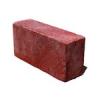I'm a C++ and SDL beginner and I'm trying to make my first 2d game (blackjack) but I'm struggling to get an elegant loop in place to control the images, animations and input.
in my rush and excitement to get graphics on the screen I ended up with a massive function handling everything, which just 2 'player decisions' in, has become a monstrous unmaintainable mess, e.g.:
bool decision_one = true;
bool decision_two = false;
card playercard3 = this->deal();
while (decision_one)
{
SDL_PollEvent(&e);
if (e.type == SDL_KEYDOWN)
{
if (e.key.keysym.sym == SDLK_h)
{
while (playersource3.x != playerdestination3.x)
{
playersource3.x += 10;
playersource3.y += 10;
SDL_BlitSurface(background, NULL, screenSurface, NULL);
SDL_BlitSurface(this->getImage(playercard1.image_number), NULL, screenSurface, &playersource1);
SDL_BlitSurface(redback, NULL, screenSurface, &dealersource1);
SDL_BlitSurface(this->getImage(playercard2.image_number), NULL, screenSurface, &playersource2);
SDL_BlitSurface(this->getImage(dealercard2.image_number), NULL, screenSurface, &dealersource2);
SDL_BlitSurface(this->getImage(playercard3.image_number), NULL, screenSurface, &playersource3);
SDL_UpdateWindowSurface(window);
decision_one = false;
decision_two = true;
}
}
else if (e.key.keysym.sym == SDLK_s)
{
card dealercard1 = this->deal();
SDL_BlitSurface(this->getImage(dealercard1.image_number), NULL, screenSurface, &dealersource1);
SDL_UpdateWindowSurface(window);
decision_one = false;
}
}
SDL_Delay(80);
}So I'm trying break it up into smaller chunks like this:
class card {
private:
std::string name;
int value;
int suit;
public:
int image_number;
SDL_Rect source;
SDL_Rect dest;
int vel;
card(std::string name, int value, int suit, int image_number);
card() {};
~card() {};
void display() const;
};
class blackjack {
private:
std::vector<card> deck;
int minBet;
int maxBet;
int decks;
public:
blackjack(int minBet, int maxBet, int decks);
~blackjack() {};
SDL_Surface* getImage(int i);
void play_hand(std::shared_ptr<player> p);
void getinput(std::shared_ptr<player> p);
void create_card(card c, int sourceX, int sourceY, int destX, int destY, int vel);
void animate_card(card c);
void shuffle();
void reshuffle();
void render();
card deal();
void play(std::shared_ptr<player> p);
};
card blackjack::deal()
{
card dealCard = this->deck[this->deck.size() - 1];
this->deck.pop_back();
return dealCard;
}
void blackjack::create_card(card c, int sourceX, int sourceY, int destX, int destY, int vel)
{
SDL_Surface* newCard = this->getImage(c.image_number);
entities.push_back(*newCard);
c.source.x = sourceX; c.source.y = sourceY;
c.dest.x = destX; c.dest.y = destY;
c.vel = vel;
}
void blackjack::animate_card(card c)
{
while (c.source.x != c.dest.x)
{
c.source.x += c.vel;
c.source.x += c.vel;
for (auto i : entities)
{
SDL_Surface *s = &i;
SDL_BlitSurface(background, NULL, screenSurface, NULL);
SDL_BlitSurface(s, NULL, screenSurface, //HOW TO GET IMAGE POS HERE?);
SDL_UpdateWindowSurface(window);
}
}
}
void blackjack::render()
{
}
void blackjack::play(std::shared_ptr<player> p)
{
this->shuffle();
init_graphics();
this->getinput(p);
}The main problem I'm struggling to get my head around is rendering all current images in the game and animating them until they reach their destination. I've created a global variable std::vector<SDL_Surface> entities to hold all images in a hand, and I've gotten to the animate card function above but can't understand how i'm going to pass in the location of all the sdl_surface entities for the blitsurface function - any advise on a simple way to add images, animate them from a source to a dest, and keep track of all of this in one 'render' function would be great








